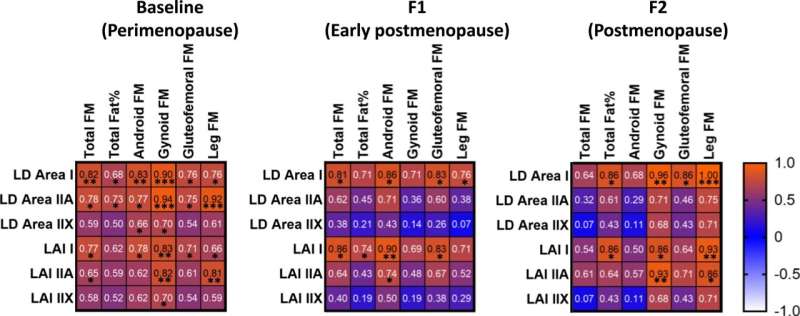Menopause and the health risks associated with increased adiposity


A study published in Aging Cell and conducted in the Faculty of Sport and Health Sciences at the University of Jyväskylä, Finland, revealed that menopausal transition increases women’s body fat, especially in the waist area. Therefore, to alleviate the health risks related to fat accumulation, women are recommended in mid-life to pay special attention to good lifestyle habits—physical activity and healthy diet—to help alleviate the health risks related to fat accumulation.
In the period of life prior to and after menopause, women tend to accumulate more fat in their bodies; the distribution of fat in the different regions of the body changes as well. Before menopause, women typically have more fat in their thigh and gluteal areas compared to men, but in midlife many women notice the increase of fat especially in their waist area. In addition to the total amount, the location of this adipose tissue also is meaningful to one’s overall health, especially because mid-region fat has been shown to increase the risk for cardiovascular disease and type 2 diabetes.
“Aging increases total body adipose tissue accumulation in both men and women, but it seems that menopause may accelerate these changes in women,” says doctoral researcher Hanna-Kaarina Juppi. “Although several studies have been conducted on this issue, the role of menopause specifically in the changing fat distribution is still under debate. Since women typically live in the postmenopausal state for several decades, it is crucial to study these changes and understand their meaning to health.”
In the current study, middle-aged women approaching menopause were followed for a maximum of four years over the menopausal transition. At the beginning and end of the study, women’s body composition, mid-thigh adipose tissue area, and adipose-tissue-derived hormones from their blood were measured. Information was collected also regarding the level of physical activity, diet, and the use of hormone therapy. Fat accumulation was investigated also at the muscle fiber level. During the follow-ups, researchers found an increase in the fat mass over the entire body, with a notable increase in the waist area. Women who were more physically active and partook in a healthier diet during the study had lower fat mass. The use of hormone preparations was not associated with body fatness.
Source: Read Full Article